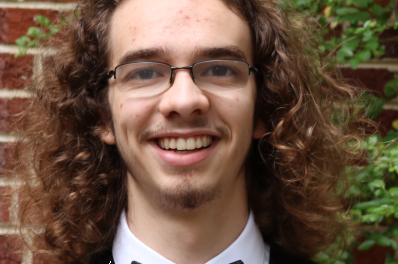I love the unknown – the unknowable as well as the unfamiliar – I find a challenge in trying to discover elements from my field of reference which elucidate or shed light upon unknown fields. I find this spirit of adventure irresistible, and programs like this concert, part of the UNC School of the Arts’ music@watson series, pose a challenge to that which makes us human, our mind. The human mind always tries to make sense of chaos!
Comprised of only four pieces, this performance focused on the importance of the late 20th century style of composition often called Minimalism. The idea of Minimalism is to use a limited palette (just a few sounds, in a repetitious manner) and to add such small changes as necessary to create more or less tension, depending on the desired function of that part of the piece.
Steve Reich, Philip Glass, John Adams and Terry Riley are probably the best known minimalists in the current American scene. On this program, Reich (b. 1936) was represented in this concert by a piece called “Eight Lines,” originally an octet, but expanded to include more musicians, a suggestion of UNC School of the Arts faculty member, Ransom Wilson, who conducted this program. Whereas the original Octet required the two woodwind players to double (switch from one instrument to another) on piccolo, flute, clarinet and bass clarinet, this version separates the flutes from the reeds, in this concert, a pair of baritone saxes. This version also doubles the strings. The work is in five contiguous sections, according to Reich’s own notes, differentiated only by which instruments are playing the long notes and which parts have the moving figures. Clearly, the two pianos usually play moving notes, being by nature unable to play long sustained notes; the longest notes occur in the string parts (with imperceptible bow changes) and the winds fall in between, usually having to interrupt held notes to breathe.
The twenty minute piece was hypnotic with a constant pattern of sixteenth notes filling the 5/8 meter. Canons abound, as the identical pattern moves from pianos to winds to violas. The texture broadens in tessitura, then thins, moves to lower instruments, broadens again, becomes louder, softer – but always the patter of sixteenth notes, changing slowly, constantly in transformation, and suddenly stopping – The End.
The opening work on the program was the concert premiere of “Oyster” (2008) by John Orfe (b. 1976), a work originally written for ballet. From Mr. Orfe’s program note: “In the piece, a series of [eight] variants (not precisely variations) have at their thematic center a piano solo, around which kernel/speck/bitter pill the other variants surround, in successively optimistic layers. The title is a salute to the crusty crustacean that accomplishes the task.” The piece is often but not consistently atonal and makes great use of percussion and percussive effects. One hears the influence of Gustave Holst at times and a direct quotation from Ottorino Respighi’s Feste Romane (La Befana).
After intermission we were treated to “The Twittering Machine” (1993) by Cindy McTee (b. 1953), inspired by the painting of the same name by Swiss-born artist (and virtuoso violinist), Paul Klee (see here). Starting appropriately with the bird-like piccolo, this composer uses doublings (different instruments playing the same thing at the same time, in unison or separated by one or more octaves, depending on the range of the instrument) as well as ostinato (think “obstinate” repetition), the rhythmic trademark of the 20th century. A slow section gave us an unlikely duet of oboe and trombone (actually, charming!) and a xylophone ostinato. A fast middle section gave us a 2/4 + 4/4 “Rumble” à la West Side Story and a satisfying major chord for a conclusion.
The concluding work on the program was exciting and probably the most complex, a concerto in three movements for clarinet and mixed ensemble by John Adams (b.1947) entitled Gnarly Buttons with UNCSA faculty member and brilliant virtuoso, Igor Begelman, in the solo role. Begelman, a recent hire to replace the retiring legendary teacher, Robert Listokin, is already somewhat of a legend in his own right and a fantastic virtuoso (I first heard him playing transcriptions of the incredibly difficult 24 Caprices for solo violin by Paganini).
The first movement, “The Perilous Shore,” is a post-minimalist tour de force starting with the solo clarinet in the dark, lower “chalumeau” register and as gloomy and foreboding as its title. Making use of a plethora of instruments, from mandolin to banjo and English horn to synthesizer, the movement eventually dies away like mosquitoes in winter. “Hoedown (Mad Cow)” sounds much more like its minimalist roots and pits a waltz against a two-step in a texture reminiscent of the neo-classical period of Stravinsky (Dumbarton Oaks, Concerto in D), ending with a musical smile. “Put Your Loving Arms Around Me,” the third movement, also makes great use of the repetitive techniques of minimalism and includes many unusual colors such as “flutter-tonguing” (vibrating the tongue while playing “r-r-r-r-r-r”). Using circular breathing Begelman built the music to a powerful climax and then eased to a gentle closing.
This was a lovely concert. The pieces were all introduced as well as directed by Maestro Wilson, who also introduced the name of the ensemble: “nu,” not “new” and clearly not pronounced “nieuw” (the Dutch origin of our “new”). Wilson suggested the French “nu” = “nude” or Yiddish “nu” = “so?” or “well?” So, what’s in a name, nu?











